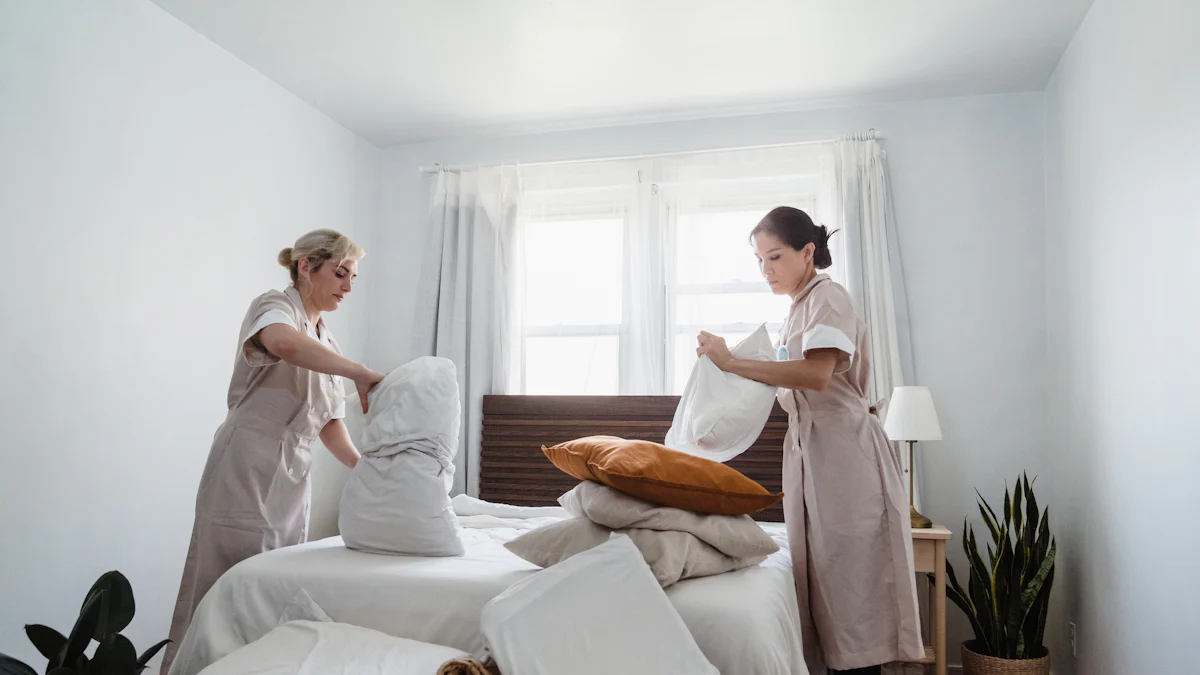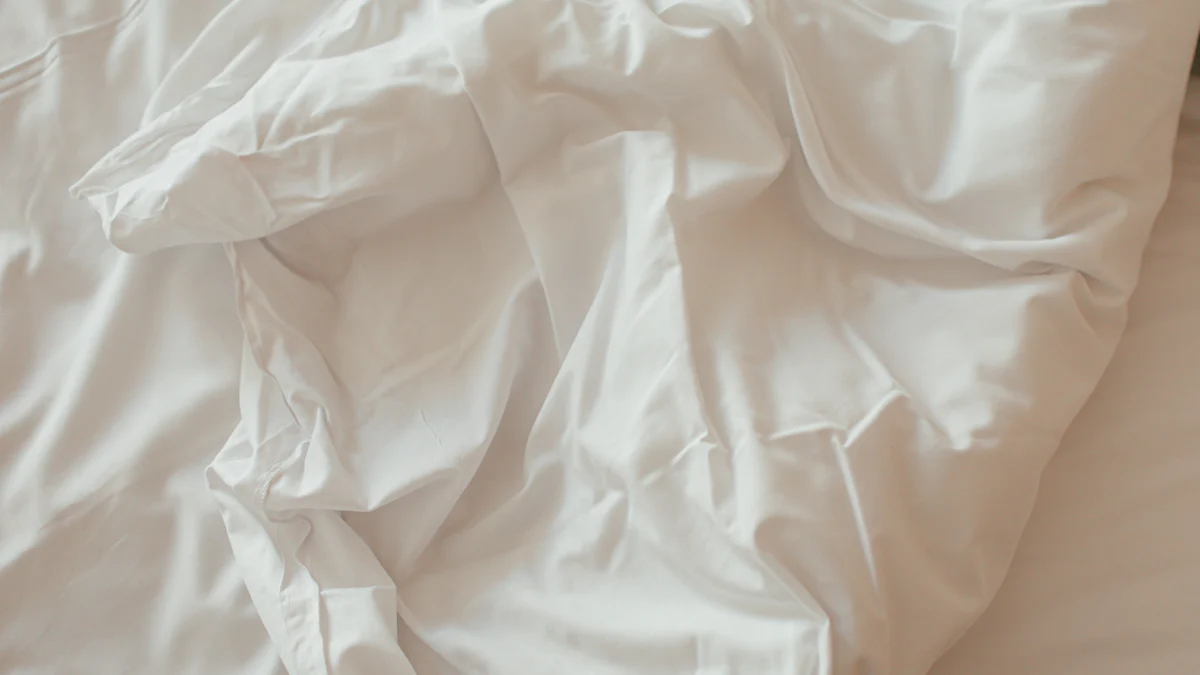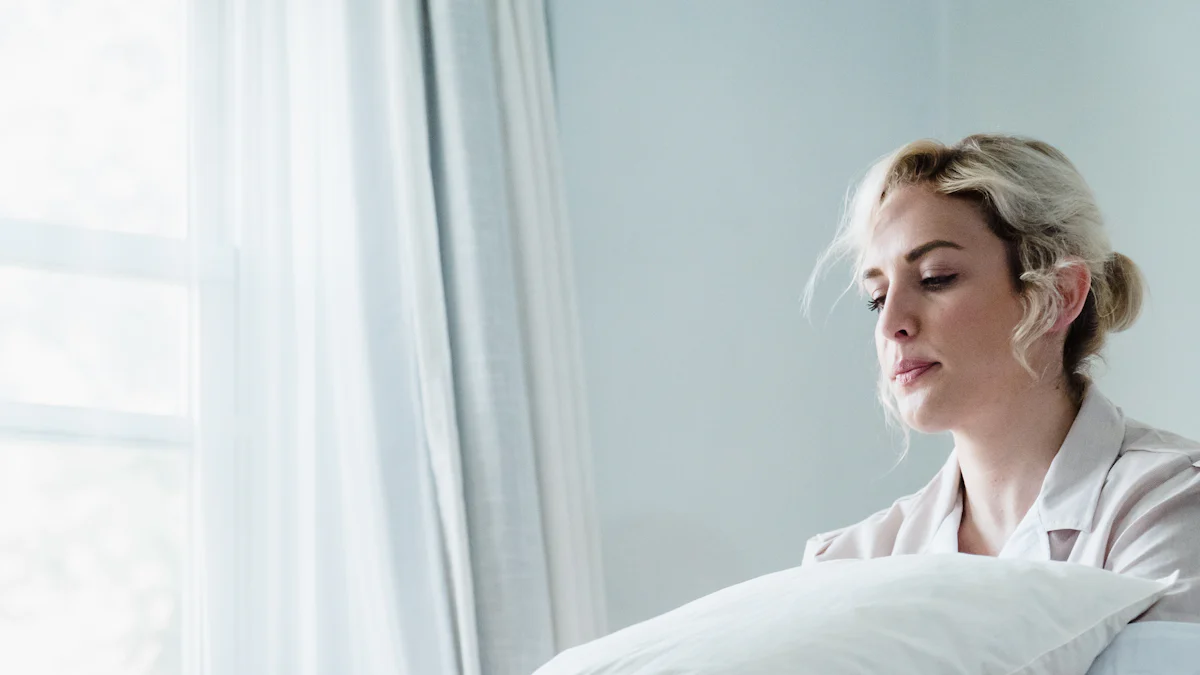
Silk pillowcases, known for their luxurious feel and beauty benefits, have gained immense popularity. They are favored for reducing skin friction, preventing wrinkles, and maintaining youthful skin. However, a common issue that plagues these coveted pillowcases is yellowing. Understanding the causes behind this phenomenon is crucial to preserving the elegance and longevity of silk pillowcases. By unraveling the mysteries of yellowing, one can unlock the secrets to maintaining pristine bedding.
Causes of Yellowing in Silk Pillowcases

When it comes to the discoloration of silk pillowcases, various factors can contribute to this undesirable yellowing effect. Understanding these causes is essential for maintaining the pristine appearance of your bedding.
Natural Factors
Oxidation
Over time, the natural process of oxidation can lead to the yellowing of silk pillowcases. This chemical reaction with the air can gradually alter the color of the fabric, affecting its overall aesthetic appeal.
Body Oils and Sweat
The accumulation of body oils and sweat on silk pillowcases can also result in yellow stains. Moisture from perspiration and natural oils produced by the body can seep into the fabric, causing discoloration over time.
External Factors
Hair and Skin Products
Usage of hair products or skincare treatments while resting on a silk pillowcase can transfer residues onto the fabric. These products contain chemicals that may react with silk fibers, contributing to yellowing.
Washing and Drying Methods
Improper washing and drying techniques can play a significant role in causing silk pillowcases to turn yellow. Harsh detergents or high heat during drying cycles can damage the delicate fibers of silk, leading to discoloration.
Environmental Factors
Humidity and Temperature
Environmental conditions such as high humidity levels or extreme temperatures can impact the color of silk pillowcases. Excessive moisture in the air or exposure to heat can accelerate the yellowing process.
Storage Conditions
How you store your silk pillowcases when not in use can also affect their color retention. Storing them in damp or poorly ventilated areas may promote mold growth or mildew formation, resulting in yellow spots on the fabric.
Health Implications of Yellowing Pillowcases
Skin Health
Acne and Irritation
Discoveries from various studies shed light on the potential skin health risks associated with silk pillowcase yellowing. Sleeping on discolored pillowcases can lead to clogged pores, triggering acne breakouts and skin irritation. The accumulation of body oils and sweat on the fabric creates a breeding ground for bacteria, exacerbating skin issues.
Allergies
Studies have highlighted that prolonged exposure to yellowed silk pillowcases may increase the risk of allergies. Dust mites and other allergens thrive in unclean bedding, leading to respiratory problems and skin reactions. Maintaining clean and fresh pillowcases is essential for reducing allergy triggers and promoting overall well-being.
Hair Health
Breakage and Frizz
Research suggests that using yellowed silk pillowcases can contribute to hair breakage and frizz. The rough texture of stained fabric can cause friction against hair strands, leading to damage and split ends. Protecting your hair health involves ensuring that your pillowcases remain clean and free from discoloration.
Hygiene Concerns
Experts emphasize the importance of addressing hygiene concerns related to yellowing silk pillowcases. Unclean bedding can harbor germs and bacteria, posing a risk to overall health. By maintaining a regular cleaning routine and preventing yellowing, you can safeguard your hygiene and enjoy a restful night’s sleep.
Preventing Yellowing of Silk Pillowcases
To maintain the pristine allure of silk pillowcases, proper care and preventive measures are essential. By following recommended washing instructions and employing protective strategies, you can prolong the lifespan of your luxurious bedding.
Proper Care and Maintenance
Washing Instructions
- Use a mild detergent specifically designed for delicate fabrics.
- Wash silk pillowcases in cold water to prevent color fading.
- Gently hand wash or machine wash on a gentle cycle to avoid damaging the fibers.
Drying Techniques
- Air dry silk pillowcases by laying them flat on a clean towel.
- Avoid direct sunlight exposure during drying to prevent discoloration.
- Iron on low heat if necessary, ensuring the fabric remains smooth and wrinkle-free.
Protective Measures
Using Pillow Protectors
- Invest in silk pillow protectors to shield your pillowcases from oils and stains.
- Pillow protectors act as a barrier against external factors that contribute to yellowing.
Regular Cleaning Schedule
- Establish a routine for washing silk pillowcases every 1-2 weeks.
- Spot treat any stains promptly with gentle cleaning solutions to prevent set-in discoloration.
- Rotate between multiple sets of silk pillowcases to reduce wear and tear on individual pieces.
Expert Testimony:
Down & Feather Company
There are a few tried and true methods that can help reduce or eliminate yellow stains from your pillows and pillowcases, and plenty of them can be accomplished with everyday household staples! You can try: Lemon juice and baking soda, Hydrogen peroxide solutions, Vinegar soaks, Oxygen-based bleach, Enzyme cleaners, Sunlight exposure.
Cleaning Yellowed Silk Pillowcases

Home Remedies
Vinegar and Baking Soda
To restore the pristine beauty of yellowed silk pillowcases, a simple yet effective home remedy involves utilizing white vinegar and baking soda. Begin by creating a gentle cleaning solution using these household staples. Soak the discolored pillowcase in a mixture of cool water and white vinegar for approximately 5 minutes. This natural concoction helps break down stains and odors, revitalizing the fabric’s original luster.
Lemon Juice and Sunlight
Another natural remedy to combat yellowing in silk pillowcases is harnessing the power of lemon juice and sunlight. Lemon juice, known for its bleaching properties, can help lighten stains on the fabric. Apply freshly squeezed lemon juice directly onto the affected areas and allow it to sit for some time before rinsing thoroughly. Subsequently, place the pillowcase in direct sunlight for natural drying. The combination of lemon juice and sunlight acts as a potent stain-fighting duo, aiding in restoring your silk pillowcases to their former glory.
Commercial Products
Silk-Safe Detergents
When seeking commercial solutions to address yellowed silk pillowcases, opt for specialized silk-safe detergents. These gentle cleansers are formulated to effectively clean delicate fabrics without causing damage or discoloration. Follow the manufacturer’s instructions for washing silk pillowcases with these dedicated detergents to ensure optimal results while preserving the fabric’s integrity.
Stain Removers
For stubborn stains that resist traditional cleaning methods, consider utilizing stain removers designed for silk fabrics. These targeted products offer enhanced stain-fighting capabilities while maintaining the softness and sheen of silk materials. Prioritize selecting stain removers specifically tailored for delicate textiles like silk to safeguard against any adverse effects on the fabric’s quality.
Product Information:
- White Vinegar Solution: Soaking silk pillowcase in cool water and white vinegar for about 5 minutes to remove yellowish discoloration and restore the original color.
- Silk Pillowcase Washing Tips: Tips on choosing mild soap or silk detergent, treating stains, avoiding harsh detergents, and preparing silk pillowcase for gentle wash.
Frequently Asked Questions (FAQs)
Common Concerns
Can yellowing be completely prevented?
Maintaining the pristine allure of silk pillowcases requires diligent care and preventive measures. While complete prevention of yellowing may be challenging due to various factors at play, adopting proper cleaning routines and protective strategies can significantly reduce the likelihood of discoloration. By following expert recommendations on washing techniques and storage practices, individuals can prolong the vibrancy of their silk bedding. Regular maintenance and timely stain treatments are key in mitigating yellowing effects, ensuring that your pillowcases retain their elegance for an extended period.
Are there any long-term effects of yellowing on silk quality?
The long-term impact of yellowing on silk quality is a valid concern for individuals seeking to preserve the integrity of their bedding. Yellowed silk pillowcases not only diminish the aesthetic appeal but also pose potential risks to skin and hair health. The accumulation of body oils, sweat, and environmental impurities on discolored fabric can lead to skin irritations, acne breakouts, and allergic reactions over time. Additionally, stained silk fibers may experience structural degradation, affecting the overall durability and softness of the material. To safeguard the quality and longevity of silk pillowcases, proactive measures should be taken to prevent yellowing and maintain optimal hygiene standards.
To maintain the allure of silk pillowcases, one must be vigilant against yellowing. Regular washing, changing pillowcases frequently, and avoiding excessive use of skin care products can help preserve their brightness. Remember, prevention is key to extending the lifespan of your luxurious bedding. By following the recommended care routines and protective measures, you can enjoy the silky smoothness and elegance of your pillowcases for years to come.
Post time: Jun-29-2024
